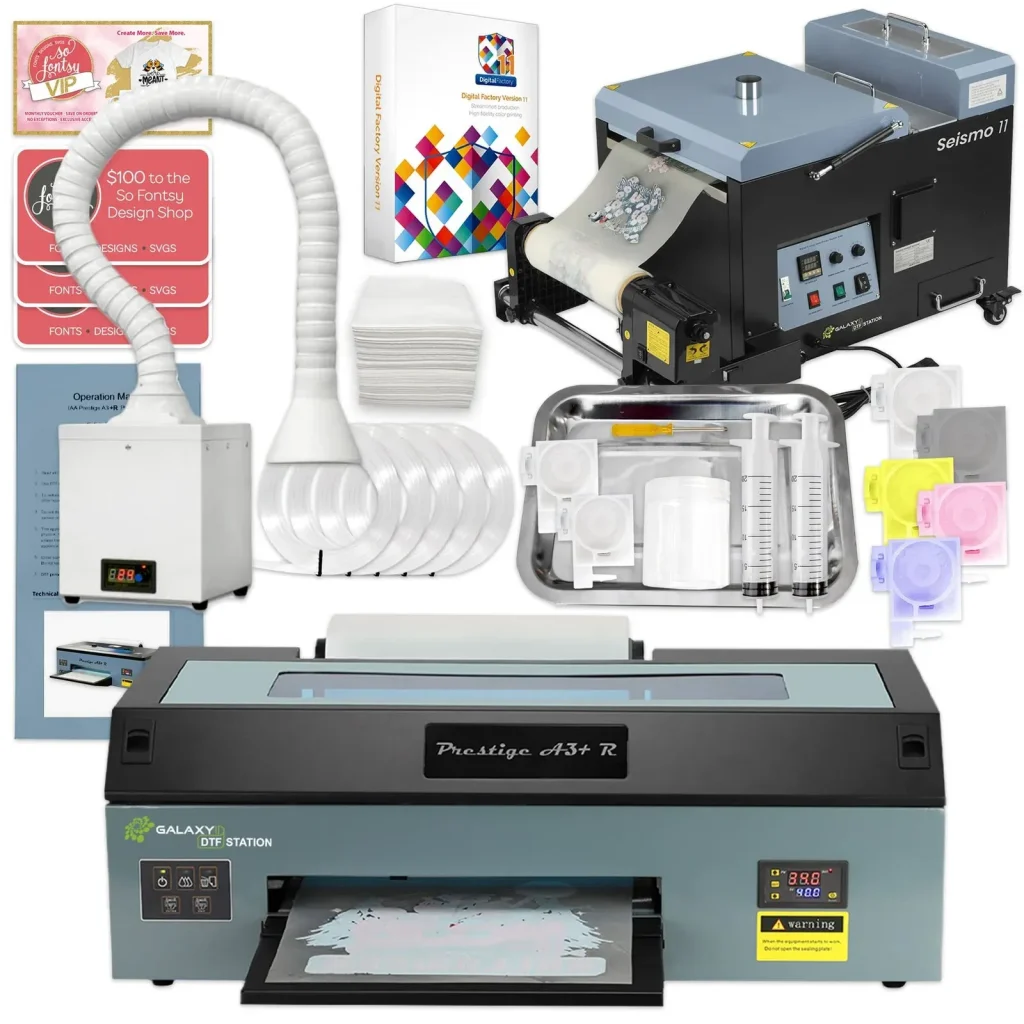DTF printer technology is transforming the landscape of garment printing, offering efficient and vibrant results that cater to a wide variety of materials. As businesses seek high-quality and versatile solutions, understanding the nuances of choosing the best DTF printer becomes imperative. This guide examines essential aspects such as print quality, speed, and maintenance, giving you insights drawn from comprehensive DTF printer reviews. Whether you’re a seasoned professional or just starting out, knowledge of DTF printing will help you make informed decisions when you purchase a DTF printer. Join us as we explore the key considerations and benefits that can elevate your printing business to new heights.
Looking for the ideal printing solution for your garment designs? Direct-to-Film (DTF) printers, also known as film transfer printers, offer a modern approach to high-quality image transfers on textiles. This comprehensive DTF printing guide walks you through the fundamental aspects of these innovative machines, highlighting various factors to evaluate before making your selection. From assessing print quality to understanding user support, our examination will assist you in navigating the process of choosing a DTF printer that aligns with your business goals. Explore how you can enhance your projects with this versatile printing method that is gaining traction in the industry.
Understanding the Benefits of DTF Printing Technology
Direct-to-Film (DTF) printing technology has emerged as a game-changer in garment decoration, combining the best elements of traditional printing methods with modern efficiency. By transferring vibrant images onto a film that is then applied to fabric, DTF printing allows for incredible detail and color accuracy. This technology is especially valued for its versatility, enabling printing on a wide array of fabric types, including cotton, polyester, and blends, which broadens the potential applications for businesses.
Moreover, DTF printing provides advantages over other methods such as Direct-to-Garment (DTG) and screen printing. It boasts a faster turnaround time and lower production costs, especially beneficial for small to mid-sized businesses looking to expand their offerings. The ability to achieve crisp edges and elaborate designs makes DTF a favorable choice for producing customized apparel, thereby enhancing customer satisfaction and driving repeat business.
Frequently Asked Questions
What should I look for in the best DTF printers?
When searching for the best DTF printers, prioritize print quality, speed, size capacity, and ease of maintenance. Ensure the printer has a high resolution of at least 1200 DPI for vibrant images and consider the types of materials you’ll print on, including dark fabrics.
How do I choose the right DTF printer for my business?
Choosing the right DTF printer involves evaluating your specific printing needs, including desired print quality, speed, budget, and the size of garments. Also, investigate manufacturer support and user reviews to ensure reliability and performance.
What are the differences between DTF printer reviews?
DTF printer reviews often highlight factors like print quality, speed, and user-friendliness. Look for comparisons based on these parameters to find a model that balances features with your printing requirements and budget.
Can I print on different fabric types with a DTF printer?
Yes, DTF printers can print on various fabric types, including cotton, polyester, and blends. However, for dark materials or specialized fabrics, ensure the printer is equipped with appropriate inks and settings to achieve optimal results.
What is a DTF printing guide, and how can it help me?
A DTF printing guide provides essential information on the DTF printing process, including selecting the right printer, preparing films, and transferring prints. Following such guides can enhance your printing knowledge and improve your operational efficiency.
What budget should I set for purchasing a DTF printer?
The budget for purchasing a DTF printer varies widely based on features and capabilities. While entry-level models may start low, investing in a reliable printer with good reviews can save costs in the long run through reduced maintenance and better print quality.
| Key Considerations | Details |
|---|---|
| 1. Print Quality | Minimum 1200 DPI for detailed images; use high-quality inks. |
| 2. Print Speed | Balance speed with quality to meet production demands. |
| 3. Size and Capacity | Choose based on garment types, consider larger print areas. |
| 4. Ease of Use and Maintenance | User-friendly interfaces and automatic cleaning cycles are optimal. |
| 5. Budget | Consider long-term costs versus initial purchase price. |
| 6. Manufacturer Support and Community | Look for strong customer service and user engagement. |
| 7. User Reviews and Recommendations | Gather insights from users to inform your decision. |
Summary
DTF printers are at the forefront of garment printing technology, combining efficacy and high-quality results. Selecting the right DTF printer is crucial for achieving vibrant designs and operational success. A thorough evaluation of print quality, speed, capacity, and user support is essential. Investing in a printer that aligns with your specific business needs not only enhances creativity but also ensures that you are well equipped to meet the demands of a competitive market. Careful research and consideration will help you choose a DTF printer that supports your long-term goals, making your printing process smooth and efficient.

